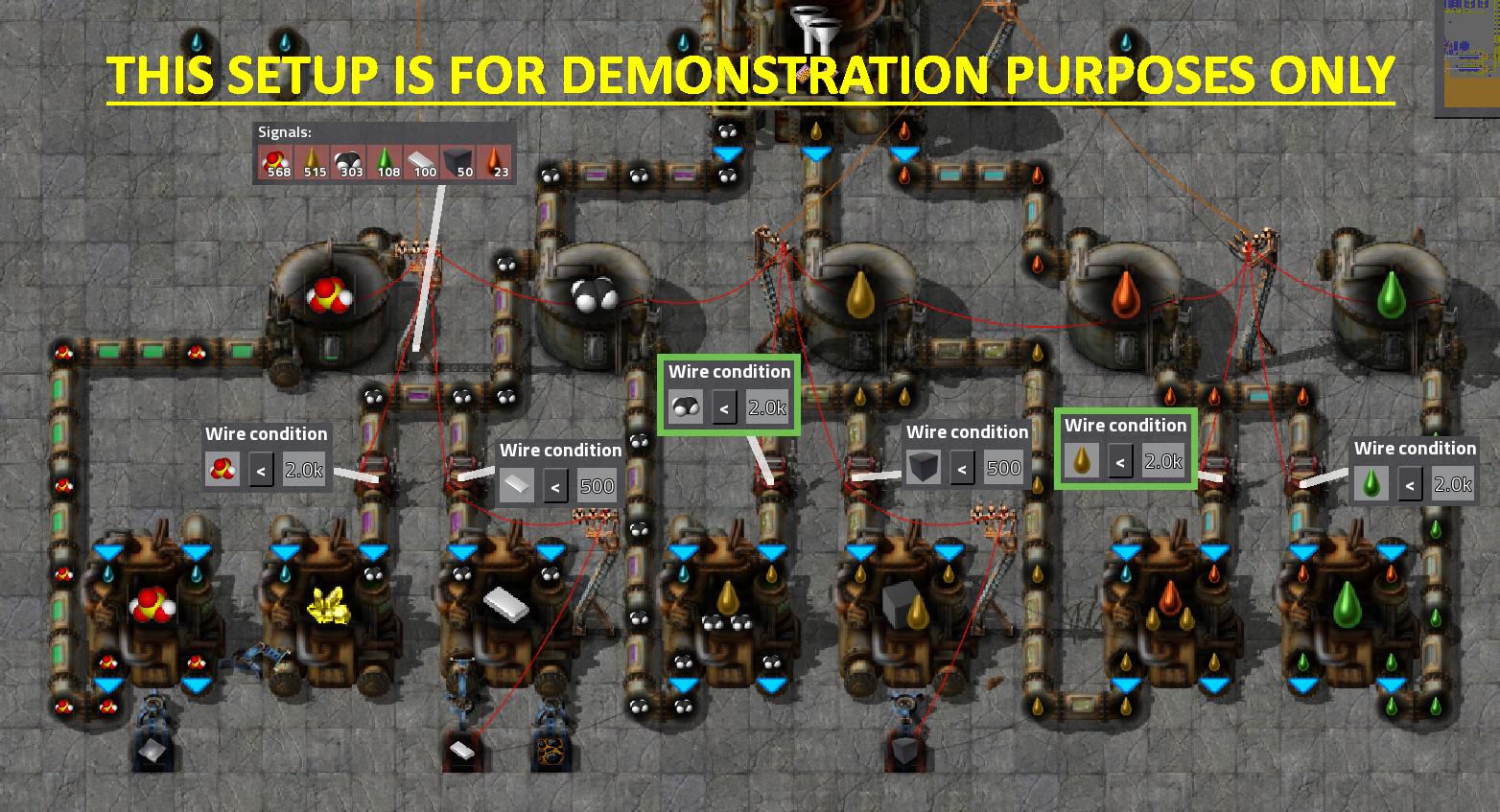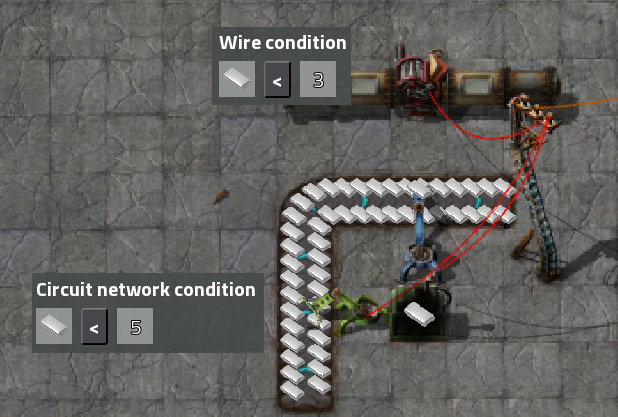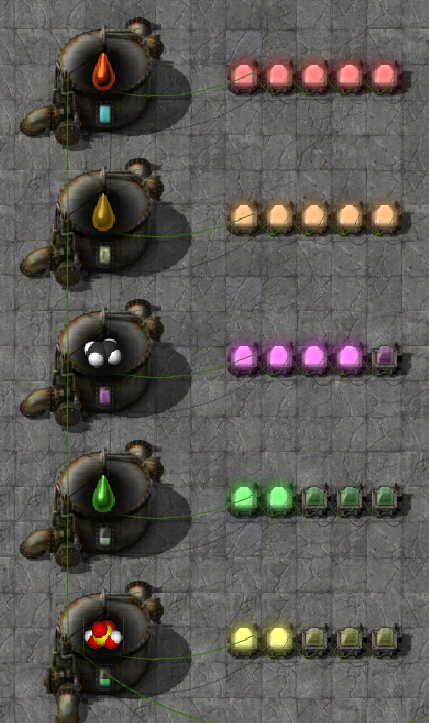First of all, I'm not a seasoned Factorio player - unfortunately I had not heard of it before it came to Steam. I've picked up tips here and there, and have come up with a solution for managing my oil products that appears to work well for me. Since oil seems to be an area that many struggle with, I thought I'd share. This is not meant as an indepth guide for your megabase oil build, but rather as a helping hand to new people.
I'll give a brief description of my build:
Refineries use Advanced Oil Processing
Heavy Oil is used for Lubricant and cracking to Light Oil
Light Oil is used for Solid Fuel (for Rocket Fuel) and cracking to Petroleum Gas
Petroleum Gas is used for Sulphur and Plastic
I produce Solid Fuel from Light Oil because it is the most cost effective.
I don't consume Solid Fuel (other than for Rocket Fuel) - if you can justify using your oil for fuel, feel free.
I use 1 storage tank for each product, and only 1. This makes it easy to monitor over-/underproduction, and allows you to supply only where there is a demand, rather than having stuff sitting in storage tanks. What you want to store is your crude oil, since it's an endless resource (with wells never going below 0.1), so even in production downtime, you will want to collect your oil.
I use pumps to control the flow within the build.
There are no combinators - simply a few wires and circuit conditions.
The image below is a demo setup, and is obviously not a proper way to do an oil build - it's simply to give a better visual representation of what is going on, while fitting it in a decent screenshot.

All the numbers in the image/following section are arbitrary and should not be considered optimal.
As you are hopefully able to tell from the image, all the pumps, storage tanks and output chests are connected with red wire. On the top left you can see the tooltip while hovering one of the connected power poles, which shows the contents of all tanks and chests. Shown next to the pumps are the corresponding wire conditions. The 2 with green borders are the important ones, which controls the cracking. Pumps connected to a wire will stop the flow until the circuit condition is met.
If we go through the pumps in the image, Heavy Oil is directed to Lubricant if that tank is below 2k, and likewise with Light Oil cracking.
Light Oil is directed to Solid Fuel if the chest(s) contain below 500, and to Petroleum Gas cracking if that is below 2k.
Petroleum Gas is directed to Sulphur if Sulphuric Acid is below 2k, and to Plastics if chest(s) contain less than 500.
With regards to Solid Fuel and Plastics - if you are producing those into chests like in the image, you will need to run wires through all the output chests.
If you are producing them onto belts, you will likely just let the belt back up to stop production and leave out the pump. In case you still want the extra control, I've built a little contraption - it's not elegant but it appears to get the job done.

When the Plastics belt starts emptying, the fast inserter will empty the smart chest, bringing it's contents below 3 and start the pump. As Plastics start producing, the smart inserter will move it into the smart chest until its contents reaches 5. The fast inserter will empty those straight out again, until the Plastics back up on the belt, which will then deactivate the pump and smart inserter.
In case you were not aware, lamps can also be hooked up to the circuit network, and I utilize this to make simple visual indicators for my pumps and storage tanks. In this image, the lamp is simply hooked up with a wire and given the same condition as the pump, making it light up when the pump is active.

Lastly an image of the storage tanks in my base, with lamps for quick recognition of the contents - the colored lamps are from the Color Coding Mod viewtopic.php?f=93&t=13907 .

What all of this attempts to achieve is the benefit of only having your precious oil used when needed, and not directed into an ever growing array of storage tanks. I've also found that it makes it much easier to make adjustments to your chemical plants: not enough Lubricant? - adjust condition for Heavy Oil cracking. Full on Light Oil, but Petroleum Gas is hurting? - build more Light Oil cracking.
If you made it this far, thank you for your time and I hope you found it helpful.
Imgur album: http://imgur.com/a/l8F9E
Cheers
-Djanx

